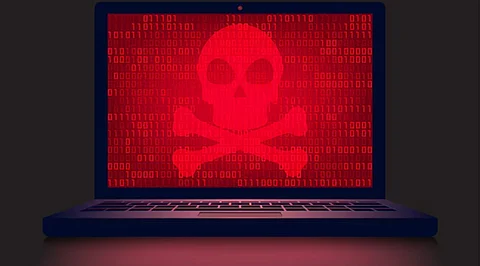

In the sophisticated world of cybersecurity threats, fileless malware has emerged as one of the most elusive and dangerous forms of malicious software. This advanced threat represents a paradigm shift in how cybercriminals operate, moving away from traditional file-based attacks to more stealthy approaches that can bypass conventional security measures with alarming effectiveness.
Fileless malware, also known as memory-based malware or living-off-the-land attacks, is a type of malicious software that operates entirely in a computer's memory without writing files to the hard drive. Unlike traditional malware that installs executable files on the target system, fileless malware leverages legitimate system tools and processes to carry out its malicious activities.
This approach makes fileless malware particularly dangerous because it leaves minimal forensic evidence and can evade traditional antivirus solutions that rely on file-based scanning. The malware essentially becomes invisible to many security tools, operating in the shadows while maintaining persistence and executing its payload.
The operational mechanism of fileless malware is fundamentally different from conventional threats. Instead of dropping malicious files onto the target system, it injects malicious code directly into legitimate processes running in memory. This technique, known as process injection, allows the malware to hide within trusted applications and system processes.
Common attack vectors include exploiting vulnerabilities in legitimate applications, using PowerShell scripts to execute malicious commands, leveraging Windows Management Instrumentation (WMI) for persistence, and abusing registry entries to store malicious code. The malware often uses legitimate system administration tools like PowerShell, WMI, and Windows Command Line Interface, which are typically trusted by security solutions.
Fileless malware encompasses various techniques and attack methods. Registry-based attacks store malicious code in the Windows registry, which persists across system reboots. Memory-only attacks exist solely in RAM and disappear when the system is restarted, making them extremely difficult to detect and analyze.
Script-based attacks utilize interpreted languages like PowerShell, JavaScript, or VBScript to execute malicious commands without creating executable files. Dual-use tool exploitation involves leveraging legitimate administrative tools for malicious purposes, a technique commonly referred to as "living off the land."
The primary challenge in combating fileless malware lies in its ability to operate without creating traditional indicators of compromise. Since no malicious files are written to disk, signature-based antivirus solutions often fail to detect these threats. The malware's use of legitimate system tools and processes makes it difficult to distinguish between normal system activity and malicious behavior.
Traditional forensic analysis becomes complicated because fileless malware leaves minimal traces on the hard drive. The volatile nature of memory-based attacks means that evidence disappears when the system is powered off, making incident response and threat hunting more challenging.
Fileless malware has been responsible for some of the most significant cyberattacks in recent years. The infamous Equifax breach partially involved fileless techniques, allowing attackers to maintain persistence and move laterally through the network without detection. Banking trojans like Kovter and Astaroth have used fileless techniques to steal financial credentials while evading traditional security measures.
Advanced persistent threat (APT) groups have increasingly adopted fileless techniques for espionage and data theft operations. These attacks often target high-value organizations and government entities, demonstrating the sophisticated nature of fileless malware campaigns.
Defending against fileless malware requires a comprehensive security approach that goes beyond traditional antivirus solutions. Behavioral analysis and anomaly detection play crucial roles in identifying suspicious activities that may indicate fileless malware presence. Advanced endpoint detection and response (EDR) solutions can monitor process behavior and memory activities to detect malicious actions.
Application whitelisting helps prevent unauthorized scripts and processes from executing, while PowerShell logging and monitoring can identify suspicious script execution. Regular security awareness training for employees is essential, as many fileless attacks begin with social engineering techniques like phishing emails.
Modern security solutions are evolving to address the fileless malware threat. Machine learning algorithms can analyze process behavior patterns to identify anomalies that may indicate malicious activity. Memory scanning technologies can detect malicious code injected into legitimate processes, while behavioral analysis tools monitor system activities for suspicious patterns.
Network monitoring and traffic analysis can help identify command and control communications, even when the malware operates entirely in memory. SASA-Software has developed sophisticated detection capabilities that combine multiple analysis techniques to identify fileless threats that traditional solutions might miss.
As cybersecurity defenses continue to evolve, fileless malware techniques are becoming more sophisticated. Threat actors are developing new methods to exploit legitimate system tools and processes, making detection increasingly challenging. The rise of cloud-based attacks and the increasing complexity of IT environments provide new opportunities for fileless malware deployment.
Organizations must invest in advanced threat detection technologies that can identify behavioral patterns and anomalies rather than relying solely on signature-based detection. The integration of artificial intelligence and machine learning into security solutions is becoming essential for combating these evolving threats.
Organizations should implement a multi-layered security approach that includes endpoint protection, network monitoring, and user education. Regular security assessments and penetration testing can help identify vulnerabilities that fileless malware might exploit. Incident response planning should specifically address fileless attacks, as traditional forensic methods may be insufficient.
Maintaining up-to-date security patches and configurations is crucial, as fileless malware often exploits known vulnerabilities in legitimate applications and system components. Organizations should also consider implementing zero-trust security models that assume no system or user is inherently trustworthy.
Understanding what is fileless malware is crucial for organizations seeking to protect themselves against these sophisticated threats. As cybercriminals continue to develop more advanced techniques, the importance of comprehensive security strategies that address both traditional and fileless threats cannot be overstated.
The battle against fileless malware requires continuous adaptation and improvement of security measures. Organizations must invest in advanced detection technologies, maintain robust security protocols, and ensure their security teams are equipped with the knowledge and tools necessary to identify and respond to these invisible threats effectively. Only through a comprehensive understanding of fileless malware and its implications can organizations build truly resilient cybersecurity defenses.
